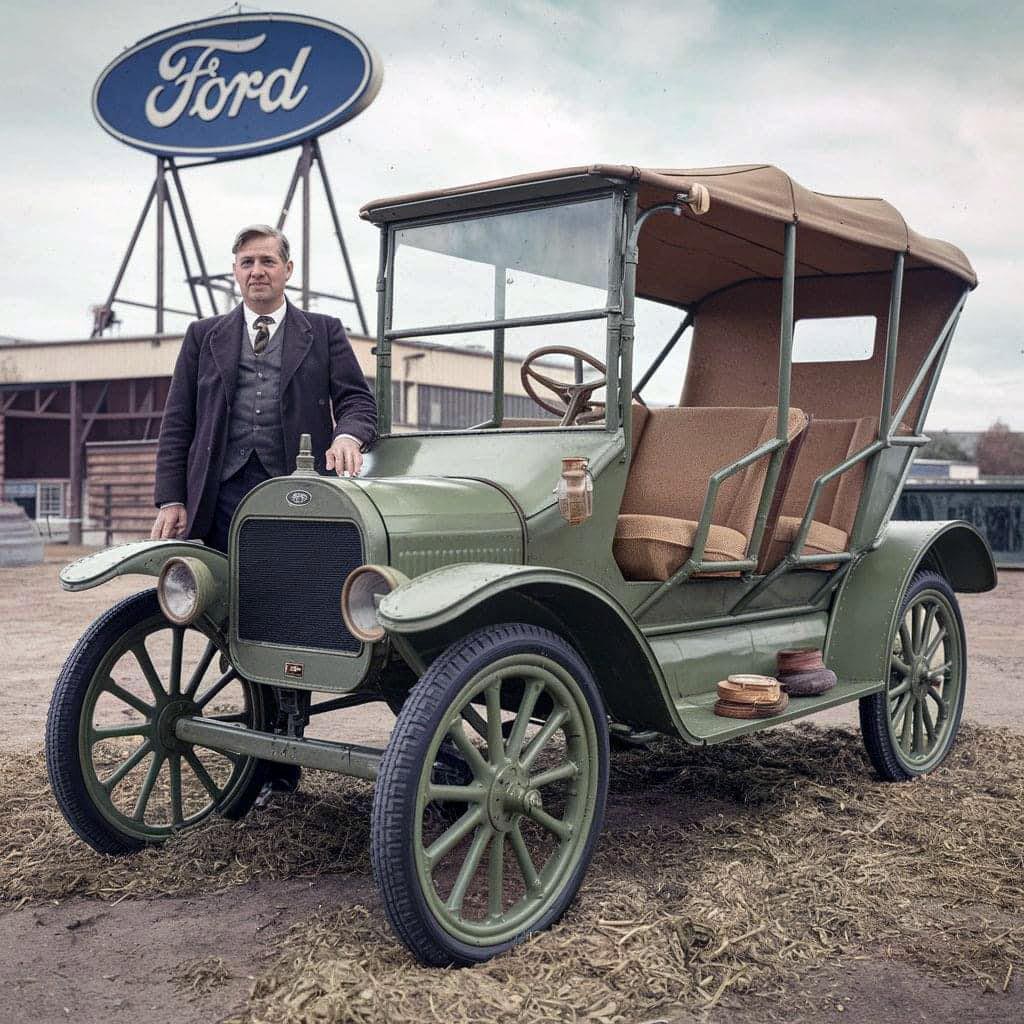Nearly
a century ago, Henry Ford revolutionized the automotive industry
with an innovative concept: a car made from hemp-based plastic,
which ran on hemp-derived fuel.
In 1941, Ford unveiled a version
of his iconic Model T that was constructed using a bioplastic
composed of hemp, flax, wheat, and spruce pulp. This
eco-friendly material made the car significantly lighter than
traditional lass while also being an astonishing ten times
stronger than steel, according to a report from the New York
Times on February 2, 1941. The car was designed to run on
ethanol, a form of alcohol fuel that could be made from hemp or
other agricultural waste products, presenting a sustainable
alternative to gasoline. This groundbreaking vehicle was a
testament to Ford's foresight, as it showcased his belief in
utilizing renewable resources to power both the car and its
materials.
 At the time, the idea of using plastic in car construction was
revolutionary, and Henry Ford saw it as a way to make vehicles
both lighter and more fuel-efficient. The Hemp Body car was an
impressive example of this forward-thinking approach: its body
panels were just a quarter of an inch thick, yet the entire car
weighed 30% less than a conventional metal vehicle. This
substantial weight reduction promised to increase fuel
efficiency, making Fordís vision of a more sustainable,
economical car a tantalizing glimpse into the future of the
automotive industry. The car's innovative design, unveiled on
January 13th, 1942, was a bold step toward redefining how cars
could be made, combining cutting-edge materials with Fordís
drive to push the boundaries of automotive engineering.
At the time, the idea of using plastic in car construction was
revolutionary, and Henry Ford saw it as a way to make vehicles
both lighter and more fuel-efficient. The Hemp Body car was an
impressive example of this forward-thinking approach: its body
panels were just a quarter of an inch thick, yet the entire car
weighed 30% less than a conventional metal vehicle. This
substantial weight reduction promised to increase fuel
efficiency, making Fordís vision of a more sustainable,
economical car a tantalizing glimpse into the future of the
automotive industry. The car's innovative design, unveiled on
January 13th, 1942, was a bold step toward redefining how cars
could be made, combining cutting-edge materials with Fordís
drive to push the boundaries of automotive engineering.
Despite the groundbreaking potential of Henry Ford's Hemp Body
car, the prototype never reached mass production, as the onset
of World War II interrupted Ford's ambitious plans. With the war
ramping up, automobile production in the United States came to a
near halt, and Ford's experiment with plant-based plastics was
shelved indefinitely. As the years went on, the prototype was
eventually destroyed, and the project was quietly abandoned.
Though the Hemp Body car never made it to the assembly line,
Fordís forward-thinking exploration of plastic in automotive
design set the stage for the future of car manufacturing. Today,
plastic materials are a fundamental part of car construction,
significantly enhancing their lightweight nature and fuel
efficiency. These materials are now used in everything from
dashboards and bumpers to body panels, offering strength and
flexibility at a lower cost compared to traditional metals.
Beyond cars, plastic has become indispensable across countless
industries. From food packaging and medical devices to toys and
electronics, its versatility has transformed the way products
are made and used in our everyday lives. Its durability, ease of
molding, and cost-effectiveness have ensured its place as one of
the most important materials in modern society.
Although Ford's plastic car experiment was ahead of its time, it
laid the groundwork for countless innovations in automotive
design and materials science. The use of plastic continues to
evolve, and as technology progresses, it's clear that its role
in both transportation and numerous other fields will only
expand, proving that Fordís vision, though unfulfilled in his
era, was a glimpse into the future of manufacturing.

